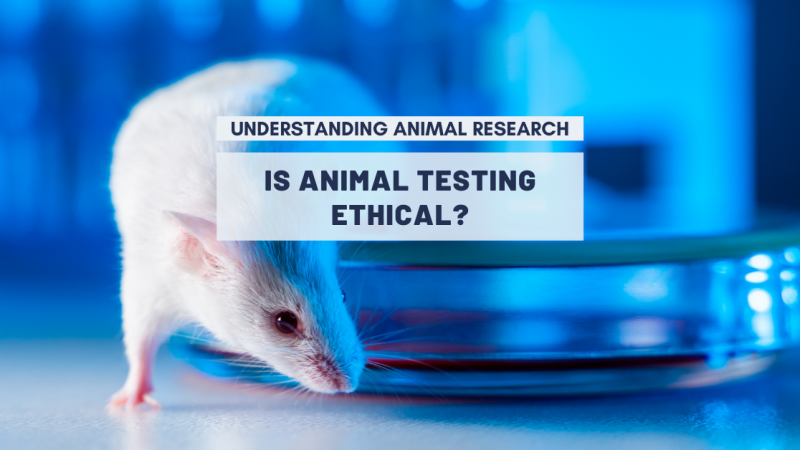In recent decades, the discourse surrounding animal testing has intensified, igniting fervent debates about its ethical implications. Central to this dialogue is the question: Is animal testing a form of animal cruelty? This inquiry not only challenges our perceptions of scientific progress but also compels us to confront our moral responsibilities towards sentient beings. As we delve into this multifaceted subject, we will examine scientific ethics, animal welfare, and the promises that modern methodologies hold for a paradigm shift in how we regard and treat non-human species.
Animal testing, historically entrenched in the scientific method, has long been a staple for pharmaceutical and medical advancements. Researchers have utilized animals to evaluate the efficacy and safety of drugs, aiming to safeguard human health. This reliance rests upon the assumption that the physiological similarities between humans and certain animals yield invaluable insights into biological processes. However, recent revelations regarding the limitations and ethical ramifications of this practice have ignited a growing concern about the treatment of these animals in research settings.
To assess whether animal testing constitutes cruelty, one must first define cruelty. In general terms, cruelty can be understood as the infliction of suffering or harm upon a being capable of experiencing pain. The paradigm of animal testing invariably raises questions about consent and the right of an organism to exist free from exploitation. Notably, many animals used in research, including rats, mice, and rabbits, are unable to voice their distress. This voicelessness renders them uniquely vulnerable and positions their suffering in a realm of moral ambiguity.
Scientific ethics plays a pivotal role in navigating these murky waters. Within academia and research institutions, ethical guidelines exist to ensure humane treatment of animals. The 3Rs—Replacement, Reduction, and Refinement—serve as cornerstone principles aimed at minimizing the use of animals in research and enhancing the welfare of those that are used. Replacement advocates for alternative methods, such as in vitro experiments or computer modeling, that bypass animal use entirely. Reduction emphasizes minimizing animal numbers required for valid results. Refinement focuses on improving living conditions and minimizing suffering during experimental procedures.
Despite these guidelines, numerous incidents in laboratory settings have highlighted systemic failures in upholding these tenets. Reports of inadequate care, neglect, and undue suffering persist, casting doubts on the sincerity of ethical commitments. Beyond mere statistical reduction, the quality of an animal’s life during testing must be considered. Many experiments subject animals to pain-inducing procedures or confine them in oppressive conditions, breeding a culture that normalizes their distress for the sake of human benefit.
These ethical quandaries have spurred advocacy groups and researchers alike to re-evaluate traditional methodologies. As scientific innovation burgeons, a range of alternative approaches is emerging that promise to mitigate, or even eliminate, the necessity for animal subjects. Technologies such as organ-on-a-chip models simulate human organs’ functions, providing robust data without the ethical burden associated with live animal trials. Additionally, advances in genomics and bioinformatics allow for predictive modeling that can forecast drug behavior and safety profiles, heralding a new era of research that seeks to reduce animal dependency.
The intersection of morality and science is indeed complex. While past practices may have been justified under the pretext of progress and human benefit, contemporary societal values are shifting towards an ethos that prioritizes compassion and ethical responsibility. This transformation underscores the necessity of scrutinizing longstanding conventions within biomedical research. As awareness of animal sentience and welfare gains traction, the public increasingly demands accountability from institutions that pursue animal testing as a means to an end.
To vilify animal testing entirely may oversimplify a deeply intricate issue; however, it is essential to acknowledge the concerns regarding the treatment of animals in research settings. Education plays a crucial role in shaping public understanding and engagement with the nuances of animal ethics. Increased transparency in research practices and a commitment to ethical rigor can foster a population that is more informed and vocal about the inherent rights of all living beings, irrespective of their species.
Moreover, the conversation surrounding animal testing should extend beyond the laboratory walls to encompass consumer awareness. Products that have undergone testing on animals still proliferate within the marketplace, prompting consumers to confront their purchasing choices. This consumer power can drive businesses towards adopting cruelty-free practices, fostering an economic landscape where animal welfare is paramount. In seeking a more ethical approach to science, the public, academia, and industries must recognize their shared responsibility in dismantling archaic norms.
Ultimately, the dynamic between animal testing and cruelty requires a thorough reevaluation of our ethical frameworks. A commitment to advancing science must not come at the price of compassion. The potential for innovation in alternative methodologies heralds hope, suggesting that the necessity of animal testing may soon be relegated to history. As society continues to grapple with these pressing questions, the pursuit of ethical alignment within scientific inquiry stands not only as an obligation but as a reflection of our growth and moral evolution as a species.








